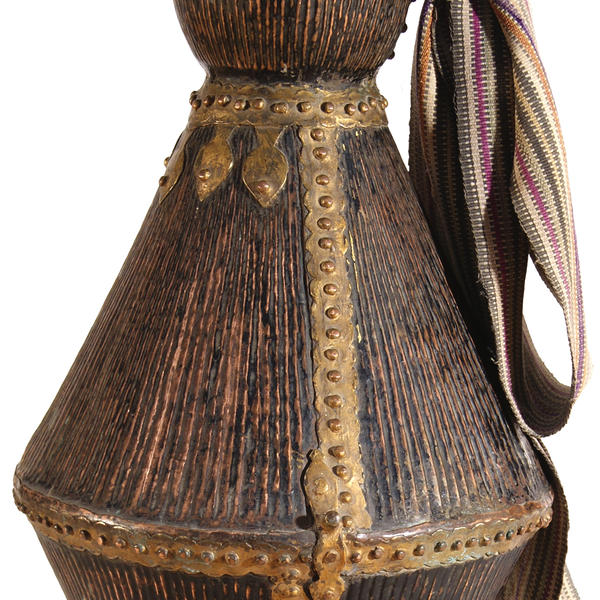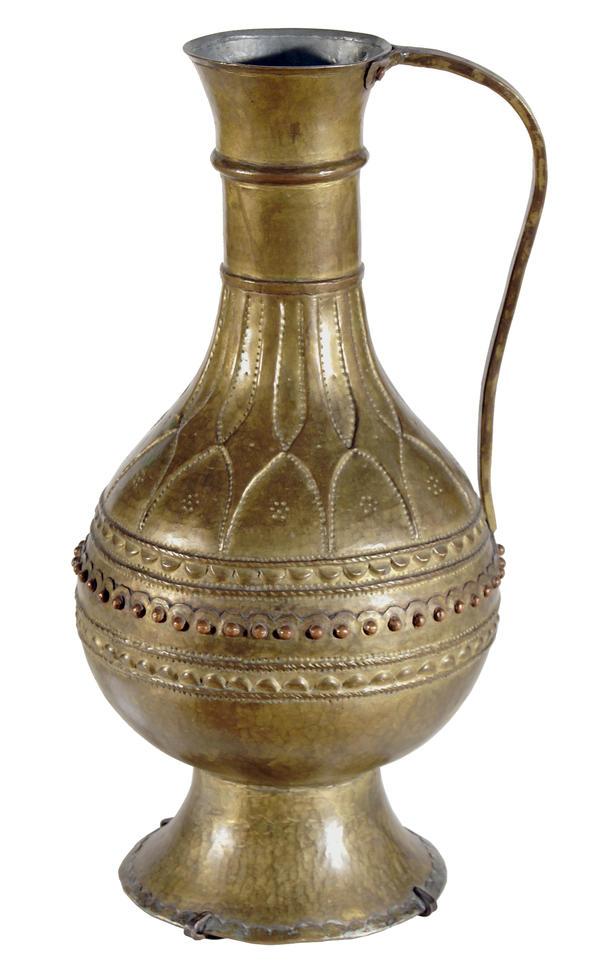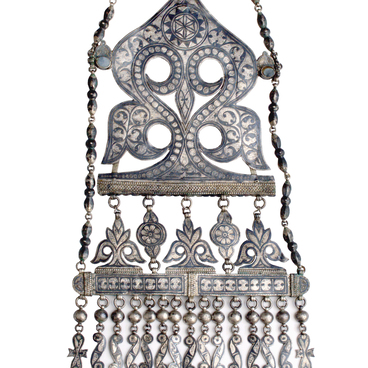Articles made by craftsmen from the Dagestan village of Kubachi were popular already in the VI century well outside of the area. Especially valuable were weapons and silver items: daggers and sabers, which Russian officers loved to show off, tableware and women’s jewelry. Legend has it that the famous two-horned helmet of Alexander Makedonsky and the shield of Alexander Nevsky were also created here.
Water pitchers were popular embossed copper items, they were reliable and light. One of them is muchal pitcher. It has a pear-like shape and consists of two truncated cones with a wide body and narrowed neck. A smaller pitcher was called ‘kutka’. It was made from yellow copper and used for washing or offering water to a passing traveler (a characteristic bent handle points to that effect). Muchal and kutka were always carried together.
Water pitchers were popular embossed copper items, they were reliable and light. One of them is muchal pitcher. It has a pear-like shape and consists of two truncated cones with a wide body and narrowed neck. A smaller pitcher was called ‘kutka’. It was made from yellow copper and used for washing or offering water to a passing traveler (a characteristic bent handle points to that effect). Muchal and kutka were always carried together.





